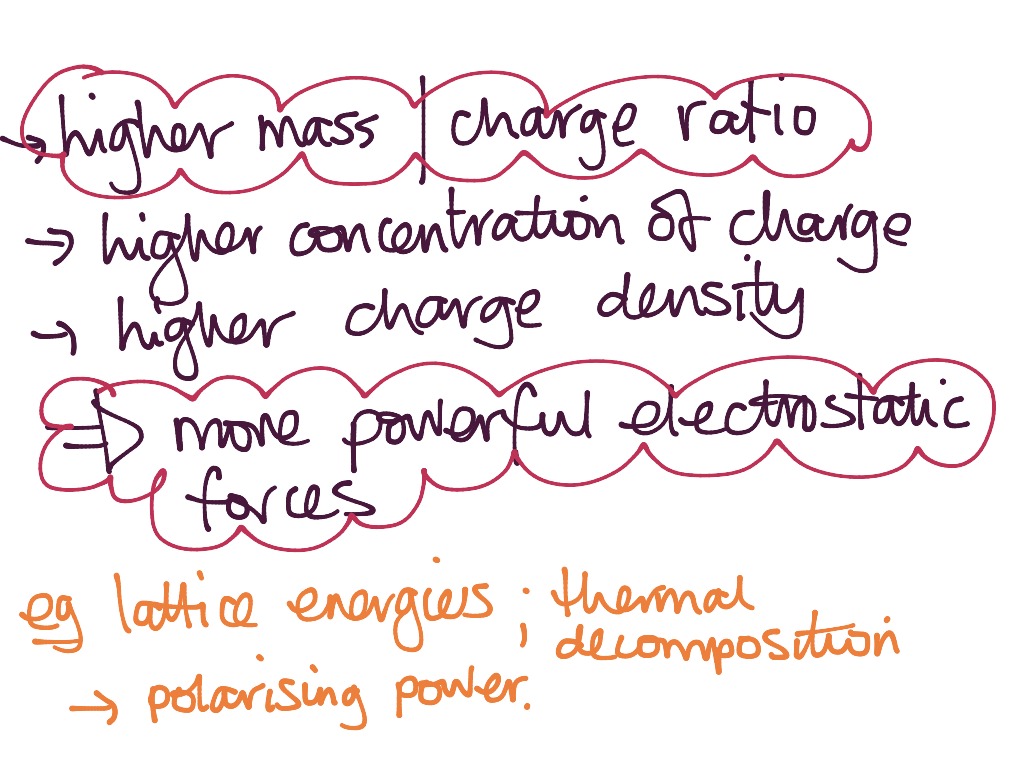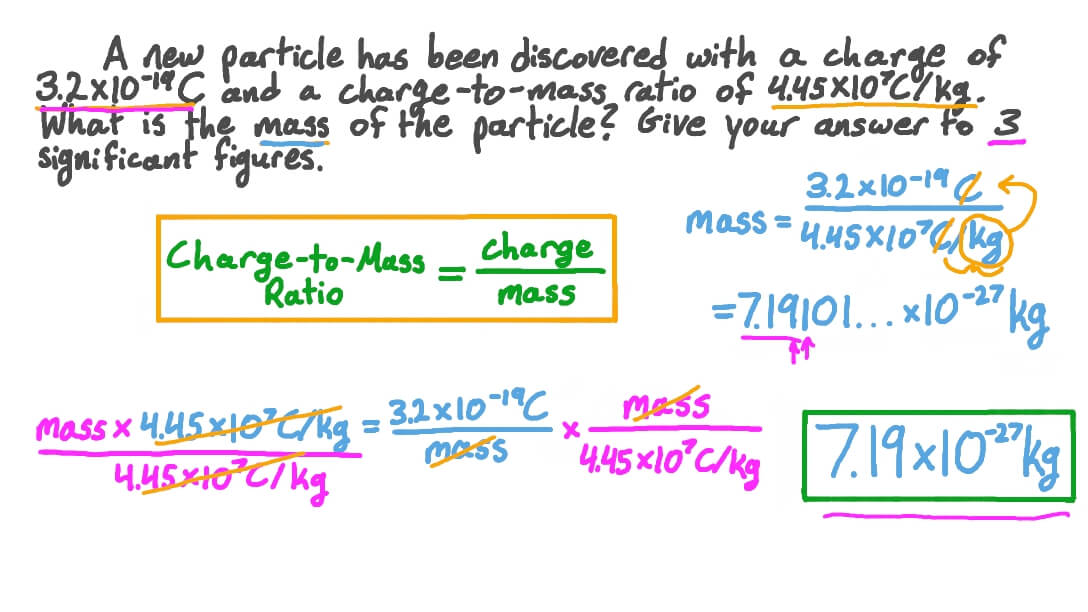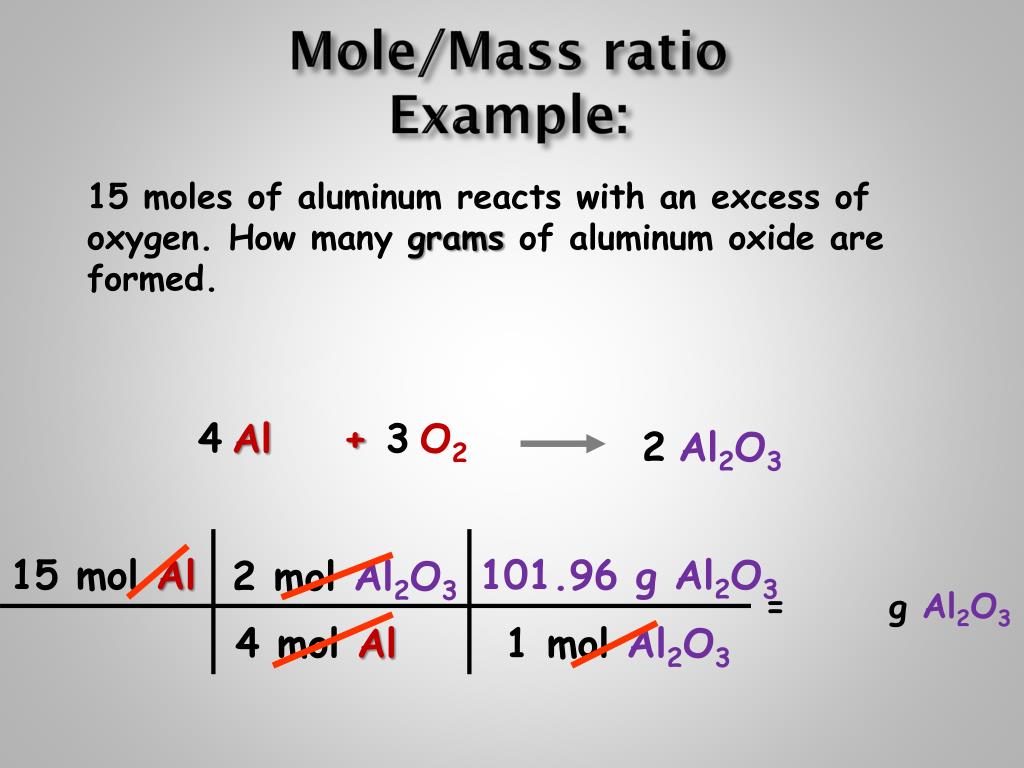
Charge to Mass Ratio Structure of the Atom CBSE Class 11 Chemistry YouTube
Mass/charge ratio is given the symbol m/z (or sometimes m/e). For example, if an ion had a mass of 28 and a charge of 1+, its mass/charge ratio would be 28. An ion with a mass of 56 and a charge of 2+ would also have a mass/charge ratio of 28. In the last diagram, ion stream A is most deflected - it will contain ions with the smallest mass.

chargemass ratio of electron, standard 11 chemistry chapter2 Gujarati medium Part2 YouTube
Mass Ratio Calculation | Chemistry for Non-Majors Uncertainty in Multiplication and Division Uncertainty in Addition and Subtraction Homogenous and Heterogenous Mixtures Study Guides for thousands of courses. Instant access to better grades!

Unit 4 Using mass ratios to predict formulas YouTube
Calculating mole ratios Remember, stoichiometry is the study of mass relations. To master it, you need to be comfortable with unit conversions and balancing equations. From there, the focus is on mole relationships between reactants and products in a chemical reaction. Mass-Mass Stoichiometry Problem

In the chemical analysis of a rock the mass ratio of two radioactive isotopes is found to YouTube
No headers. In mass spectroscopy, the mass-to-charge ratio (symbols: m/z, m/e) of a cation is equal to the mass of the cation divided by its charge. Since the charge of cation formed in the mass spectrometer is almost always +1, the mass-to-charge ratio of a cation is usually equal to the mass of the cation.

mass to mass ratio YouTube
A teaching video on Mass Ratio used in the 'Global Climate Change' module at The University of Texas at Austin.

9th Class Chemistry Chapter 6 Volume over Mass Ratio YouTube
10. 50 we havelnm0m=vu0=3×1075×103=6000andm0m=e6000=102600This ratio is so large that much less than one molecule of rocket would be left, regardless of the rocket's initial mass! Chemical rockets do not develop a sufficiently large exhaust velocity to be viable options for interstellar travel.

Mass Ratio YouTube
In this Tutoring Thursday session, we discover how to calculate the mass ratio of a chemical compound.We demonstrate simple steps that will allow you to conf.

Mass charge ratio Science, Chemistry, Atoms, Atoms Ions ShowMe
We can balance the equation by placing a 2 in front of NaOH (so that there are 2 Na atoms on each side) and another 2 in front of H A 2 O (so that there are 6 O atoms and 4 H atoms on each side). Doing so gives the following balanced equation: 2 NaOH ( a q) + H A 2 SO A 4 ( a q) → 2 H A 2 O ( l) + Na A 2 SO A 4 ( a q)

Comment calculer un pourcentage massique 13 étapes
What is mass ratio in chemistry? Stoichiometry: Stoichiometry refers to the calculations made to find amount of reactants and products in a chemical reaction. Stoichiometry is based on the law of conservation of mass, where the total mass of reactants will have to produce an equal amount of products, supposing the reaction has a 100% reaction.

Question Video Using the ChargetoMass Ratio to Find the Mass of a Particle Nagwa
Where: Mass Ratio (MR) is the ratio of the mass of Substance A to the mass of Substance B, typically expressed as a decimal or fraction. Mass of Substance A (MA) is the mass of the first substance in the mixture or reaction, typically measured in grams (g), kilograms (kg), or other appropriate units.

Structure of Atom Class 11 Chemistry Charge to Mass Ratio of Electrons YouTube
In chemistry, mass ratio, often called "percent composition by mass," is the proportion of a particular molecule that consists of each that molecule's constituent elements.

Mole Ratio Definition and Examples
Mass Ratio Here the ratio of the masses of molecules or atoms can be calculated. Please enter the empirical formula of two molecules, the entry format is similar to the Round to Molecular mass X: u Molecular mass Y: u Examples: The water molecule H 2 O has a mass ratio of oxygen to hydrogen of 7.94.

PPT S’MORES PowerPoint Presentation, free download ID1881651
The mass ratio of copper per gram of chlorine in the two compounds is 2:1. For a given mass of chlorine, compound A contains twice the mass of copper as does compound B. For each compound, find the grams of copper that combine with 1.00 g of chlorine.

Quantum Gravity and the Holographic Mass Ratio Description The New Energy Industry
The mass-to-charge ratio ( m / Q) is a physical quantity relating the mass (quantity of matter) and the electric charge of a given particle, expressed in units of kilograms per coulomb (kg/C). It is most widely used in the electrodynamics of charged particles, e.g. in electron optics and ion optics .
CHEMISTRY 11 ISOTOPES AND ATOMS October 26, 2010
Step 1: List the known quantities and plan the problem. Known Compound A = 4.08 g Cu and 2.28 g Cl Compound B = 7.53 g Cu and 8.40 g Cl Apply the law of multiple proportions to the two compounds. For each compound, find the grams of copper that combine with 1.00 g of chlorine by dividing the mass of copper by the mass of chlorine.

Mass Ratios YouTube
4: Atomic Structure 4.5: Mass Ratio Calculation